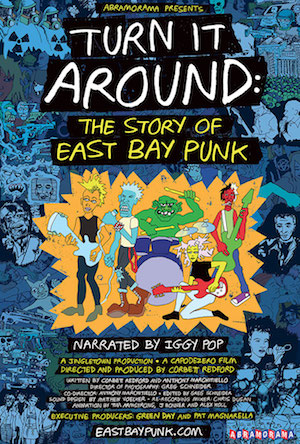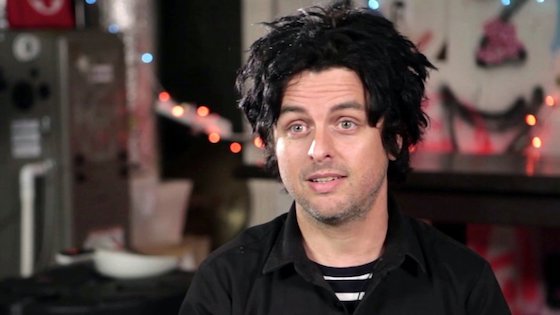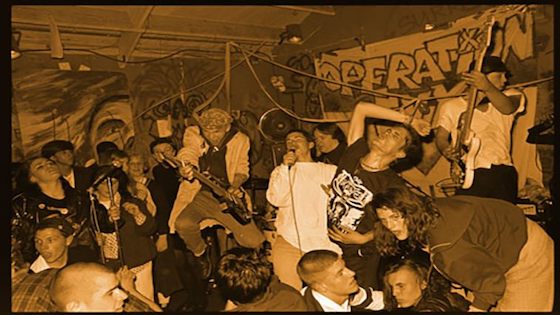Showing now until August 17 at Screenland at Tapcade.
For a documentary that’s executive produced by Green Day, Turn it Around: The Story of East Bay Punk has surprisingly little Green Day in it. And from the tone of the bands, creatives, and fans interviewed for the movie, that seems appropriate.
After all, this isn’t a story of band that came out of nowhere and skyrocketed to the top of the charts and eventually into the Rock and Roll Hall of Fame, it’s about what happens when a DIY support system bubbles up around kids who have a pure love of music and a lot to say.
Iggy Pop narrates and Corbett Redford directs this exhaustive, over two-and a-half-hour account of the punk rock music scene that grew up organically across the bay from San Francisco — around Berkeley and Oakland, and surrounding suburbs like Pinole, El Sobrante, and Rodeo. It traces the counterculture of the late 60s and 70s into the explosion of punk and the emergence of San Fran’s most famous punk band, the Dead Kennedys, but then quickly becomes a detailed account of the social and cultural experiment known as 924 Gilman Street. If you’re any kind of serious rock fan, you probably have at least heard of bands like Operation Ivy and Neurosis.
Maximumrocknroll was the biggest and most influential fanzine of the 80s punk rock and independent music scene. Bands all over the country were creating a places to play and a support system outside of bars and the mainstream. When that zine’s Tim Yohannan found a warehouse space in Berkeley, he envisioned an all-ages, volunteer-run place where diverse amateur could perform and flourish, and that’s exactly what happened.
The challenge with telling the complete story of a scene is that Turn it Around: The Story of East Bay Punk features a hundred or so interviewees who come and go as Redford broaches another era or another theme of the film. Because of this, the movie can’t help but fall into some predictable patterns.
(It was a nice piece of design work to have a different rocker write the name of a band with marker on an invisible piece of glass in front of the camera, but after eight or nine of these diversions, my heart started to sink thinking we were about to hear yet another origin story of another band of teenagers.)
That said, Redford really does do an amazing job keeping the narrative focused and organized, while taking time out for some minor detours. And again, he’s covering a lot of ground. Ironically, although everyone in the doc agrees Green Day were a wildly talented band very early on, they also end up being one of the bands that changed the scene dramatically, after their signing to a major label. The tone of this discussion seems pretty even-handed, although I have some experience being in a scene, and I know how petty and jealous everyone can be. Turn it Around: The Story of East Bay Punk alludes to this for sure, but has to move on.
The ace up Redford’s sleeve is that he has compiled a wealth of flyers, artwork, zine articles, and camcorder footage from back in the day and has designed the look of his film around them. He also has a lot of editing tricks up his sleeve to make the interviews more visually interesting, such as filtering them at times through a fuzzy VHS monitor look, complete with static bars. The animation is dynamic and top-notch, and it’s all designed to match the look of the punk-rock comics and caricatures of the time that often appeared in zines and on photo-copied artwork and flyers. Key artists like Jesse Michaels and Aaron Cometbus did drawings and lettering, while Tim Armstrong oversaw animation.
With the sheer ambition in the number of micro-stories related to its core subject and its overly long running time, Turn it Around: The Story of East Bay Punk is both fascinating and it also tried my patience several times. Maybe every single band didn’t need a spotlight, but I also understand that the movie is ultimately richer because it gives a truly wide spectrum of voices the chance to be heard. Redford’s real triumph is that he was able to tell a cohesive story out of so many jagged parts, and do it with an energy that was reflective of that special moment in time.












Comments on this entry are closed.